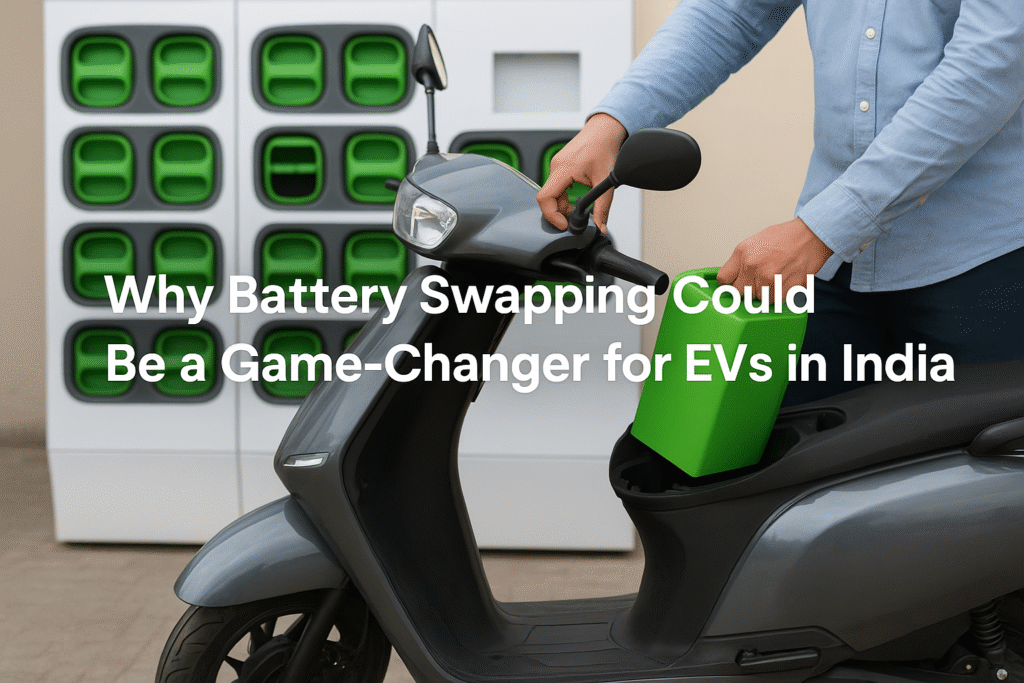Battery Swapping
Battery swapping means changing an empty battery with a fully charged one at a swap station. Instead of waiting for your EV to charge, you just swap the battery in a few minutes and continue your journey.
This model is called “Battery-as-a-Service”, where the battery is owned and maintained by the operator, and the user only pays for energy (per swap or on a subscription plan).
Why Battery Swapping is Important for India
1. Saves Time
Charging an EV can take hours, but with swapping you can get a full battery in just 2–3 minutes. This is perfect for delivery bikes, e-rickshaws, and fleet operators who need to be on the road all day.
2. Reduces Vehicle Cost
The battery is the most expensive part of an EV. By separating the battery from the vehicle, the price of the EV goes down. Users can simply subscribe or pay for battery swaps, making EVs more affordable.
3. Increases Driver Income
Delivery partners and e-rickshaw drivers lose money when they wait for charging. With fast swaps, they can take more rides, earn more, and never worry about downtime.
4. Easy to Set Up
Swap stations don’t need huge spaces. They can be installed at petrol pumps, parking areas, shops, or bus depots. This makes it faster and cheaper to create a large network compared to fast charging stations.
5. Better for the Power Grid
Since batteries are charged outside the vehicle, operators can charge them slowly and during off-peak hours. This reduces pressure on the electricity grid and improves battery safety.
Where It’s Already Working
Two-Wheelers & Three-Wheelers:
Companies like Battery Smart, SUN Mobility, and Gogoro already have large swapping networks in India. Riders can swap batteries in minutes and keep moving.Fleet Vehicles & Buses:
Some pilot projects are testing battery swapping for buses and commercial fleets where quick turnaround is important.
Government Support
Draft Battery Swapping Policy (2022): Introduced by NITI Aayog to promote standardization, safety, and easy setup of swap stations.
Power Ministry Guidelines (2025): Clear rules for installing and running battery swapping and charging stations, making expansion faster.
State EV Policies: Delhi and other states are supporting battery swapping for delivery fleets and public transport.
Benefits for Everyone
For Riders: Lower cost, no waiting, no battery maintenance.
For Operators: Can manage batteries safely, control charging, and provide reliable service.
For Cities: Cleaner air, reduced traffic pollution, and faster EV adoption.
Key Players in India
Battery Smart – 1,000+ swap stations across 30+ cities.
SUN Mobility – 900+ swap points in partnership with IndianOil and logistics companies.
Gogoro – Recently launched in Delhi and Goa, focusing on two-wheelers and delivery fleets.
Battery swapping is a fast, affordable, and practical solution for India’s EV growth. It solves problems like charging time, high EV cost, and range anxiety. If safety standards and infrastructure improve, battery swapping can change the future of mobility in India—especially for two-wheelers, three-wheelers, and commercial fleets.

